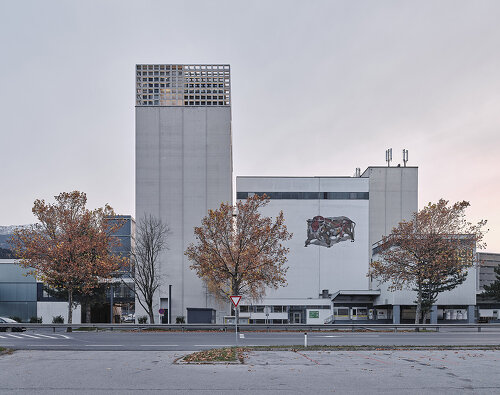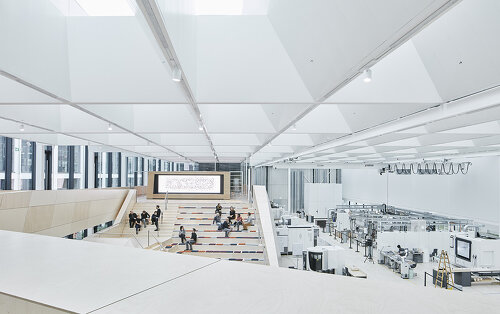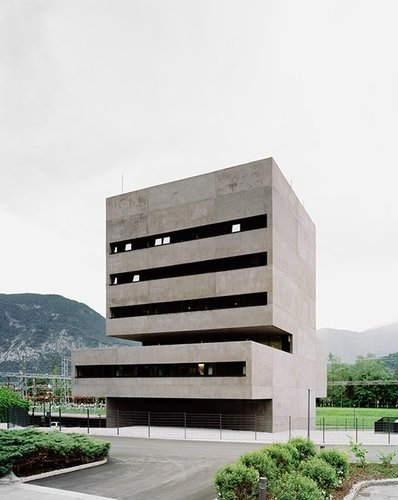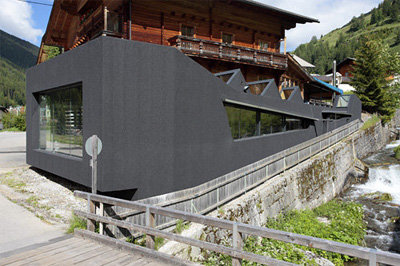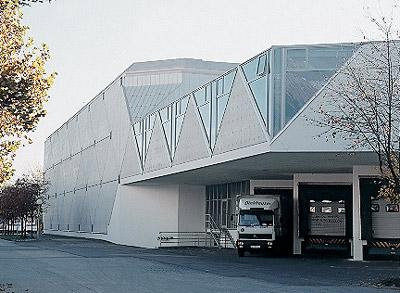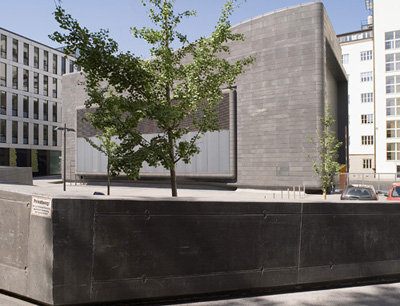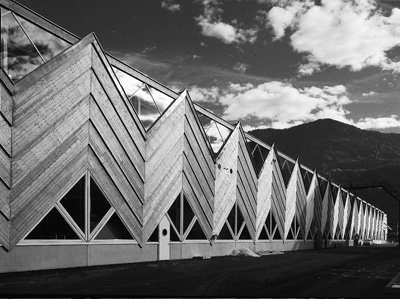Gutmann Pellet Store
Architecture: obermoser + partner architekten, Hanno Schlögl (2019-2020) Builder-owner: Gutmann GmbH Open to the public: no The transformation received an award from the Tyrolean State Prize for New Building 2022.
The former granary in the commercial area of Hall was converted into a transshipment center for wood pellets for an energy company and expanded to include a space for company events. The basic idea of the design was to place a crown on the existing tower and thus transform the anonymous commercial structure into an architecturally striking building. The two-story addition was encased in a filigree precast concrete façade, the grid of which refers to the structures found in the existing building.


